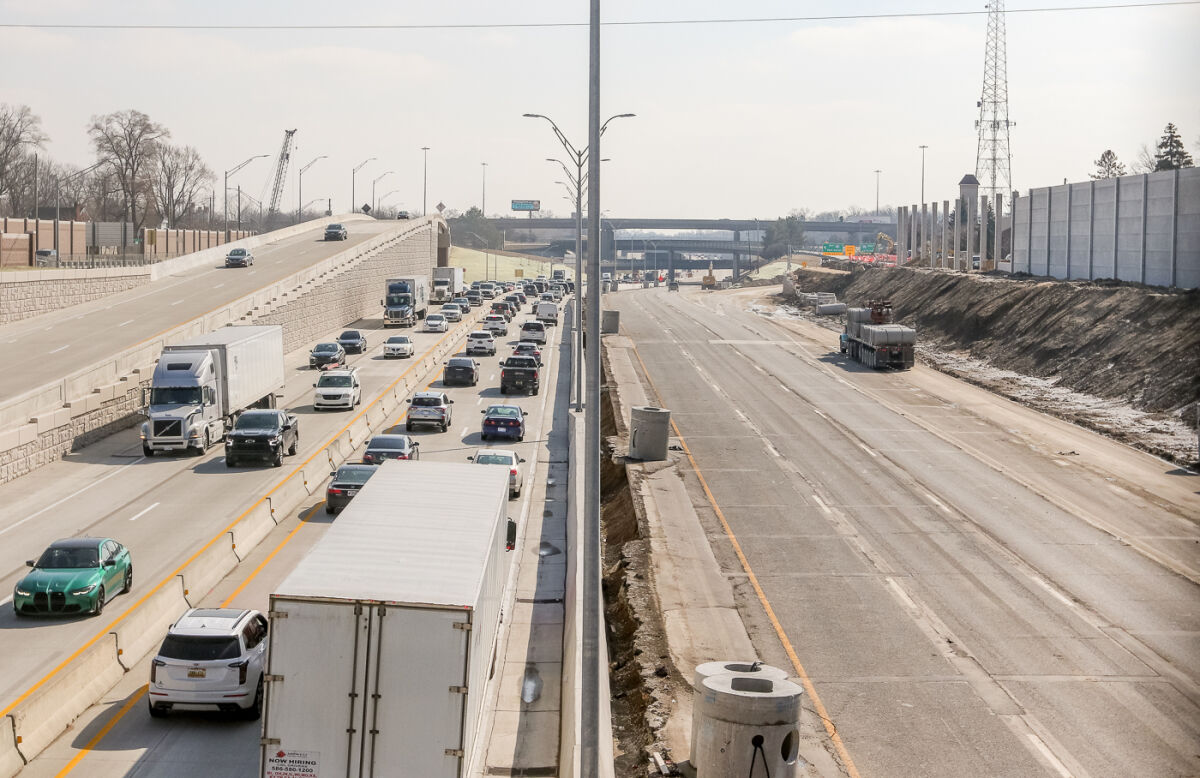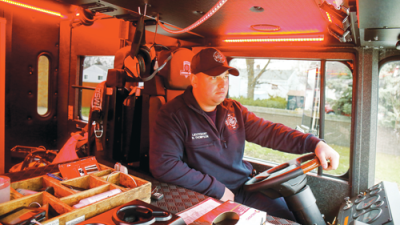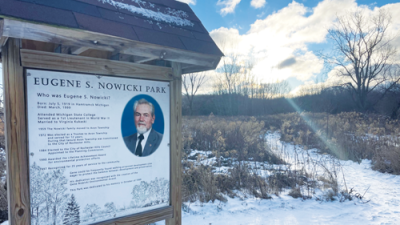MADISON HEIGHTS — Work has resumed on an ambitious project to improve Interstate 75 across Oakland County.
Late last month, two-way traffic on I-75 began sharing the northbound lanes between 13 Mile Road and Interstate 696, with two lanes maintained in each direction, while reconstruction is completed on the southbound side.
In addition, ramp closures are now in place at several locations, including the 12 Mile Road exit and entrance ramps to southbound I-75, the 11 Mile Road exit and entrance ramps to southbound I-75, and the southbound I-75 ramps to eastbound and westbound I-696. These will be in place for the remainder of the 2023 construction season.
Access will be maintained both on northbound I-75, from westbound 12 Mile Road, as well as from the northbound I-75 exit to eastbound 12 Mile Road.
At press time March 1, 12 Mile Road was closed under I-75 so that construction crews have room to rebuild the bridge. The 12 Mile Road ramps to and from southbound I-75 were also closed.
“Rebuilding the bridges that carry southbound I-75 over the county drain, located just north of 12 Mile Road, and 12 Mile Road proper, is expected to last until early fall,” said Rob Morosi, spokesperson for the Michigan Department of Transportation (MDOT), via email. “When the bridge work is finished, we expect to open 12 Mile. Again, the target is early fall.”
The project first resumed this year Feb. 24-27. During that weekend, it was closed in both directions between I-696 and the I-75 business loop (Square Lake Road), with all ramps to northbound I-75 closed from I-696 to 14 Mile Road, and all ramps to southbound I-75 closed from M-59 to 11 Mile.
Also during that weekend, northbound I-75 traffic was rerouted west on I-696 to northbound M-1 (Woodward Avenue), then eastbound Square Lake Road to northbound I-75, while southbound I-75 traffic followed westbound Square Lake Road to southbound M-1, then eastbound I-696 back to southbound I-75.
Morosi explained that the entire modernization project will be largely complete by the end of the year, with finishing touches in 2024 such as the completion of a new drainage tunnel.
“With that said, after fall of 2023, no more traffic shifts and long-term lane closures,” he said. “The quadrant being worked on in 2023 is the final one for Segment 3.”
Segment 3 is the third and final phase of the project, now underway. It runs from 13 Mile Road to Eight Mile Road and began in August 2019, with an estimated price tag of $630 million.
It was preceded by Segment 2, from Coolidge Highway to 13 Mile Road, which began in October 2018 and wrapped up in November 2020, costing $224 million; and Segment 1, from South Boulevard to Coolidge Highway, which started in August 2016 and finished in September 2017, to the tune of $90.9 million. In the end, the project will have rebuilt close to 18 miles of freeway, replaced 47 bridges, and modernized interchanges at the I-75 business loop, Big Beaver Road, and 14 Mile and 12 Mile roads, along with constructing the 4-mile drainage tunnel between Eight Mile and 12 Mile roads.
While the changes promise to bring about greater safety and efficiencies across the region, some at the local level have their concerns. Mark Bliss, mayor pro tem of Madison Heights, said the project has been especially hard on his community.
“I hope that it all is worth it in the end, because very few communities across this entire giant project have been impacted even 10% as much as Madison Heights has,” Bliss said. “We have suffered major closures on major arteries of our city. Madison Heights is only 7.8 square miles, and we have 30,000 residents here relying on these major roads. So as we’ve been going through this construction project now for some years, all of that traffic is being diverted into residential side streets, and it’s going to cause us a long-term issue that I’m not sure MDOT and the state have really factored in with this project. And our local roads are going to need replacements and updates much quicker now because of the additional traffic, specifically related to some of the trucks that have had to move off I-75 due to these closures. And then there are the added gas costs to fixed-income residents driving with these congestion delays.
“So I’m concerned about our roads and residents. I’ve yet to feel we were considered in this plan in a way that remedies the issues we experience,” he said. “This project benefits the entire state, but it hurts and penalizes our city more than most. I hope that those in higher office are able to help, maybe with additional funding for projects that we now know we will need sooner, like a road that now has to be replaced 30% earlier than we planned. I mean, I get it — you look at these projects from a macro viewpoint and they’re really beneficial with a huge impact, but my question and concern is will it be worth it in the micro sense for Madison Heights specifically as a community, given that we have suffered a major impact here. It would be nice to have a plan that mitigates some of the long-term consequences.”
 Publication select ▼
Publication select ▼















